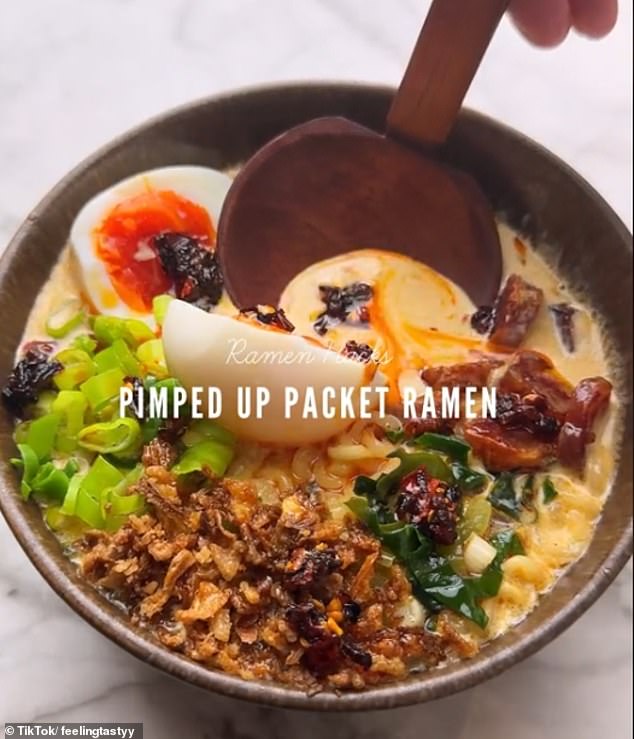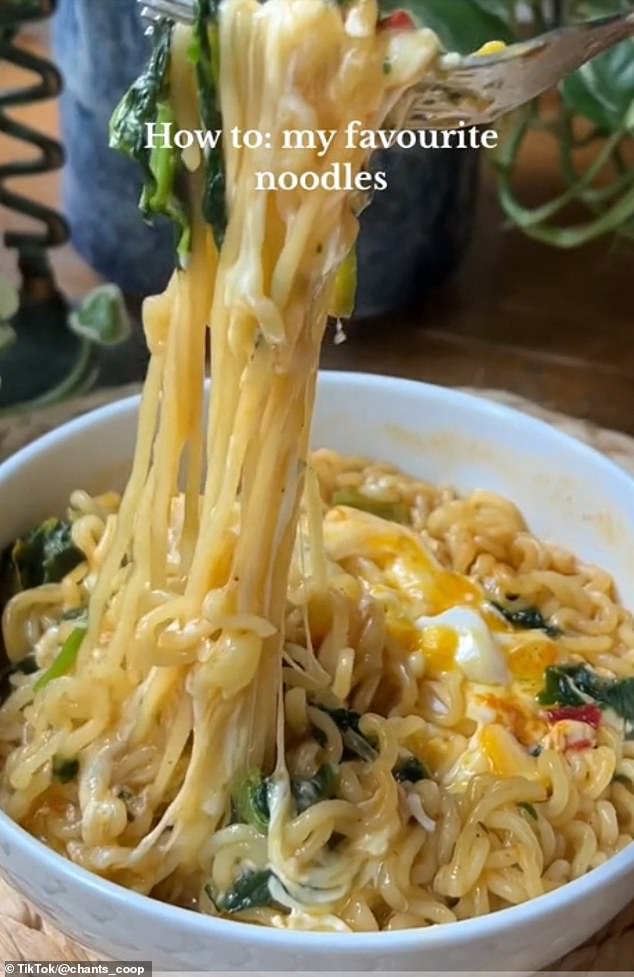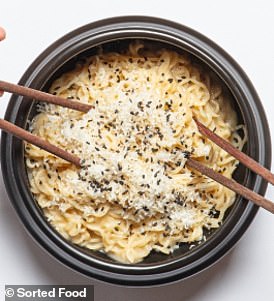They were once reserved for cash-strapped students looking for a cheap hangover cure.
But today, instant noodles have undergone something of a makeover, and Gen Zers around the world are “sprucing up” their ramen bowls with gourmet ingredients.
Far from the humble dish of the early 2000s, packaged noodles have become something of a luxury, with young chefs adding multiple ingredients, including Kewpie mayonnaise and meatballs, to the once-simple dish.
Like most current trends, it’s become prevalent on TikTok, with influencers including Gen Z royalty Kylie Jenner taking to the platform to reveal the ingredients they add to their instant ramen – in the beauty mogul’s case, it’s butter, garlic and egg.
As such, supermarkets have reported a growing interest in the East Asian snack, with Ocado reporting a 50 per cent increase in sales and a 35 per cent rise in searches for the product, according to Guardian.
Gen Z is ‘upgrading’ their instant ramen, including TikTok content creator Serena from London (pictured)
An international food buyer at Ocado told the paper: ‘When it comes to a quick and cheap dinner solution, you can’t beat packaged noodles, but here, they’ve often been dismissed as a bit studenty and not very gourmet – I’m glad that’s starting to change.
‘As many TikTok fans will attest, the right ingredients, like nori and chili oil, can elevate even the humblest noodle dish, adding texture, flavor, and extra nutrients.’
Influencers have helped spark the product’s resurgence by taking to TikTok to reveal how they improve packaged noodles, with more than 20,000 videos on the topic currently on the platform.
In 2016, Kylie Jenner raised interest in the snack when she asked her followers how they improve their instant noodles.
She sent her followers into a frenzy to imitate her, causing instant ramen to trend on Twitter, now X, with thousands of people flocking to the kitchen to try her recipe and debate whether it was the best way to eat the food.
To this day, TikTok is littered with people making “Kylie Jenner ramen,” just as Gen Z is recreating Gigi Hadid’s signature vodka pasta or Hailey Bieber’s pizza toast.
Harper Fine Dining chef and director Dean Harper said the trend reflects Gen Z’s commitment to social media experimentation, telling FEMAIL: ‘Instant noodles have come a long way from being just a cheap, quick meal.
‘Now, thanks to TikTok and social media, people are turning them into gourmet dishes. I think what’s driving this is that people, especially Gen Z, want to create something unique at home that looks good and tastes even better.

Joely Hiles from London racked up over a thousand views on her clip of her “pimped-up ramen packet” recipe (pictured)
“There’s a trend to put noodles in everything, like adding them to a creamy carbonara with parmesan on top for that carb-heavy comfort food. It’s about experimenting and making something you can be proud of, both on the plate and on social media.”
TikTok is full of content creators sharing their innovative recipes. London-based Joely Hiles racked up over 20,000 views on her “pimped-up ramen packets” clip.
He added various sauces, smoked Chinese sausages and crunchy toppings to make his instant noodle dish “extra good.”
Meanwhile, Chantal Coop similarly shared her noodle recipe, adding egg and cheese to the Shin Ramyun packet to create her “hug in a bowl” meal.
Food content creator Serena, aka @onserenasplate, got creative and “combined different fusion flavors” with the humble packet of instant ramen noodles to make “firecracker ramen carbonara.”

Food content creator Chantal Coop shared her noodle recipe on TikTok, adding egg and cheese to the Shin Ramyun packet to create her “hug in a bowl” meal (pictured)
He added ingredients like bacon, chicken broth, gochujang, and parmesan to make his ‘improved instant ramen pack.’
Meanwhile, businesses have begun to cash in on the trend, with shops including convenience store SABA on London’s Kensington High Street selling packaged ramen that customers can prepare in-store.
London-based food blogger Jane, known online as @tasteofsurprise, shared her experience at the homemade ramen bar on TikTok. She picked up a packet of Shin Ramyun, which costs £1.20 at Tesco, added hot water and extra ingredients including cheese, and paid £9.
This comes after doctors warned that fans of a popular type of super-spicy ramen could be at risk of a kidney problem that can lead to blood poisoning.
Noodles contain up to half of the recommended daily dose of salt in a single meal, warned urologist Dr. David Shusterman.
The high salt content in Buldak ramen increases the risk of crystal formation in the kidneys, which can then develop into stones that damage organs and trigger infections. If left untreated, kidney infections can spread to the bloodstream, which is known as sepsis.
The warning comes after content creator Lucy Mourad, 24, from Washington state, revealed in a recent TikTok clip that she suffered the complication after eating buldak ramen every week for six months.
She blamed the stones, which led to an emergency room visit and unbearable cramps, and the noodles, saying: “Buldak ramen… is a huge contributing factor.”
She added that she had been “eating more and more” of this ramen “over the past few months,” so she suspected the ramen was to blame.
Her symptoms began as back pain that moved to the front of her body as bladder stones formed.
He also described noticing blood and small objects floating in his urine.
New York City-based Dr. Shusterman warned that the complication could be related to ramen: “It’s possible, since processed and canned products are loaded with tons of salt.”
‘This means that eating processed foods, such as instant noodles, soups, frozen meals, etc., could cause the formation of kidney stones.’
Research suggests there is also a risk that some spices may cause kidney stones by significantly increasing levels of a chemical called oxalate in the urine, increasing the risk of crystal formation.
Buldak noodles are gaining popularity globally and in the United States. Its manufacturer, South Korea-based Samyang Foods, says sales hit a record five billion units by mid-June last year.
Ready-to-eat noodles are available in a variety of flavors, including the popular ‘Rakisoba Hot Chicken’ and ‘Carbonara Hot Chicken’.
But the products also contain a huge amount of salt: 1,280 milligrams (mg) per serving.
For comparison, a packet of Lays salt and vinegar potato chips contains 590 mg per packet, while a standard ready-made meal is estimated to contain around 580 mg.
The USDA recommends that people consume no more than 2,300 mg of salt per day, the equivalent of one teaspoon.
Manufacturers are likely to add high levels of salt to enhance the flavor of their products.


